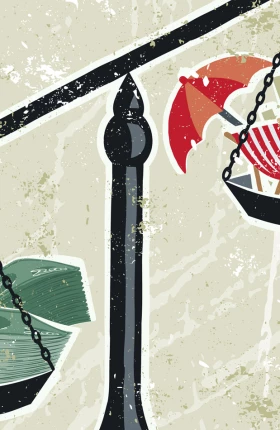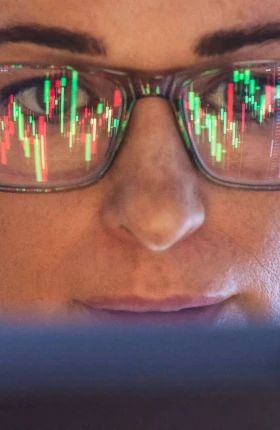The COVID-19 crisis quickly brought the travel and tourism industry to a virtual standstill, as steep drops in demand forced unprecedented capacity adjustments by airlines, cruise lines, hotels, railways, car rental companies, and tour operators. But when the inevitable recovery comes—perhaps in months, although it may take longer—this industry will confront a problem that few have ever faced: setting prices and generating revenue from scratch.
The crisis has rendered meaningless the typical reference points—including historical booking patterns and trends—that drive price optimization. This drastic change has essentially turned companies’ revenue management (RM) systems into blank slates. In addition, markets will probably be fundamentally reshaped in the aftermath of the pandemic. For an extended period, travel demand will be lower than precrisis levels, and travel patterns are likely to be very different.
Companies that move the fastest and remain the most flexible in understanding and adapting to these new conditions have the potential to gain significant market share and secure their positions. Amidst the high levels of uncertainty and volatility, travel and tourism companies need to manage pricing and customer relationships in the short term, while retuning their RM systems to optimize revenues for the economic recovery.
Managing Pricing and Customer Relationships in the Short Term
Demand for travel and tourism has fallen precipitously, at first fueled by a reluctance to travel during coronavirus outbreaks and later reinforced by government-issued travel bans. Previous demand shocks—such as those caused by deep recessions—have usually triggered corporate demand to fall off sharply and quickly, while leisure demand declined more gradually. But the COVID-19 crisis has caused all forms of demand to plummet simultaneously. Massive capacity adjustments have quickly followed. Airlines and tour operators canceled about half-a-million flights from March through May, cruise lines moored numerous ships in harbors, and high-speed railways in Germany, Italy, Spain, and other European countries saw traffic decline drastically. Regardless of how acute this situation looks, no company can assume that price cuts will boost volume in the short term as they usually do under normal circumstances. Making any significant price moves now is dangerous, because a company’s RM system could overreact. RM systems were never designed and calibrated to handle the extremes of the current circumstances.
No company can assume that price cuts will boost volume in the short term as the usually do.
RM systems and analysts cannot make reliable recommendations in this crisis for several reasons. First, historical price elasticities are misleading; the data underpinning them came from a travel and tourism world that no longer exists. Second, analysts often optimize prices with a bias toward volume. If applied to the current situation, this tendency could trigger a race to the bottom that would harm revenue and price positions even more. Finally, the algorithms used by RM systems have the tendency to drop prices when demand declines in order to stimulate demand. That is fruitless when there is no demand to stimulate.
Companies must implement extra measures to avoid massive revenue dilution as the COVID-19 crisis persists. In fact, by taking three steps, companies can address these issues in the short term.
First, companies must put crisis pricing policies in place and develop criteria for mechanisms that can override the RM system.
Companies should reduce their customers' uncertainty by being generous with cancellations, refunds, and "rebookings"
Second, companies should reduce their customers’ uncertainty and fear as much as possible by being generous regarding cancellations, refunds, and “rebookings.” This approach not only protects the company’s reputation but also helps preserve the customer lifetime value. Some companies may also extend premium advantages to loyal customers during the crisis as a sign of goodwill. Hotel chains, for example, are already relaxing requirements for their loyalty programs.
Third, companies should maintain contact with customers during the crisis by providing updates, helpful travel information, or anything else that will help customers make sense of how the crisis impacts them. Communication with customers—especially with loyal customers—should also be a two-way street. It is important for customers to have a means to make requests and provide feedback in an unbureaucratic way.
By taking these three steps, companies will have a head start in the direct marketing channel when demand returns and the recovery comes.
Moreover, companies should closely monitor both strong and weak market signals and then develop leading indicators in order to understand when a potential recovery may begin. RM teams need to understand the interplay of several factors to determine the nature of the recovery and how heterogenous it could be. Even if one assumes—purely for the sake of argument—that the first sign of a sustained recovery is higher domestic demand in contagion-free or recovering markets, some questions will remain:
- How deep will the full decline be from peak to trough?
- Will leisure travel recover faster than business travel because the latter is affected by budget reductions, event cancellations, and the use of collaboration tools?
- To what extent will job losses, reduced income, and lower consumer confidence make people more reluctant to travel?
From a strategic standpoint, companies will also need to understand what shape the recovery will take. A V shape means a direct and swift recovery, a U shape means a more gradual recovery with a longer period at the trough, and an L shape means that the market has seen a true structural break and will remain smaller than it was before the crisis.
Optimizing Revenue During the Rebound
Just as the trends and data gathered prior to the COVID-19 crisis have lost their meaning, so, too, may precrisis market share levels and market positions become irrelevant. The industry players that are properly prepared to optimize prices during the recovery will have the best chance of capturing significant share, especially if some companies in their markets rely too heavily on obsolete RM system recommendations, struggle to bring capacity back into service, or do not survive the crisis at all. We see five key priorities as companies prepare for the recovery.
Forecast volatile demand. Traditional demand forecasts are usually slow to adapt to changing demand and capacity patterns. But in the post-COVID-19 world, the existing backward-looking forecasting approaches simply will not work.
Bionic revenue management is the best approach for forecasting volatile demand.
Nonetheless, the ability to forecast demand remains crucial, and companies will need to reconstruct their processes from the bottom up. By applying best-in-class data science, companies can retrain their forecast models to weight recent data more heavily than historical data and to make much greater use of contextual data. At this stage, bionic RM—the combination and integration of machine algorithms with human inputs and judgment—is the best approach.
Companies will require multiple data sources to feed these bottom-up forecasts. RM analysts will need to track early signs of demand, look-to-book ratios, and social media information, as well as market capacity, capacity shares, and competitive pricing. The analysts will also need to track data by market, because the onset, pace, and intensity of the recovery will differ by region and by customer segment. Recovery data from previous crises indicates, for example, that transient business at hotels is likely to recover faster than group business.
But there is no precedent for how the various forms of travel may recover after the COVID-19 crisis. To what extent will companies continue to use collaboration tools that are much cheaper and greener alternatives to business travel? To what extent will leisure travel suffer if the economic cost of quarantining and social distancing reduces household disposable income in the medium term?
To predict the rebound—in terms of the timing, form, location, and extent—RM teams need to combine and analyze rich sets of contextual data that include data on travel bans, customer sentiment, macroeconomic trends, epidemic developments, and internet search trends. Pricing and RM teams can test the impact on prices from various scenarios and use the findings to help the organization develop a robust top-down strategy.
Measure price elasticity developments. Companies will need a new set of price elasticities that both derive from and reflect the post-COVID-19 market conditions. The most efficient RM teams will test their most promising hypotheses, and they will learn quickly when lower prices can stimulate demand and when they no longer can.
The companies that apply machine-learning approaches, provided they frequently retrain their algorithms, will have a structural advantage over their peers in terms of price optimization. Traditional data science approaches, such as regression analysis, won’t be applicable until enough data is available. But companies could fall back on a structured test-and-learn approach to measure price elasticities and use that information to help optimize revenues.
Recalibrate the RM system. Players will have to invest extra effort in recalibrating their RM systems, rather than ignore the outputs and manage dynamic pricing manually. RM teams are inclined to ignore RM system recommendations amidst dramatic shifts in demand and capacity. But manual inventory management can never match the possibilities offered by algorithms that can process vast amounts of data to manage millions of price decisions on a daily basis. The bionic approach makes the best use of each side’s strengths and thus strikes the best balance.
RM analysts and managers can play a key role in retraining algorithms with influences, manual inputs, and adjustments. The analysts and managers can proactively focus on validating forecast outputs in order to understand where the RM system is less effective and then take corrective actions. They will also need tools to help them set priorities. It is neither feasible nor economically sensible, for example, for an airline or tour operator to scrutinize all flights equally. Each company needs to home in on the flights where changes can yield the greatest incremental economic impact, regardless of how well a flight may be performing otherwise.
Reset pricing and promotions for a new segment mix. The promotional strategy will play a critical role in how well a travel or tourism company performs during the ramp-up—when capacity increases may still exceed demand—and also during the longer-term recovery. Heavily discounting fares now for future peak departure periods may provide a short-term boost and an influx of cash, but it may also put the company’s longer-term viability at risk.
Pricing and revenue management teams should assess which market segments may need incentives to resume traveling.
In terms of specific promotions, pricing and RM teams should assess which market segments—such as seniors and families—may need extra incentives to resume traveling. Then the teams should consider offering new products, or tailoring the fares of current products, to attract these customers. They should also capitalize on business traffic and leads to push leisure occasions through travel management companies and corporate deals.
Set up processes to ensure rapid responses. During the post-COVID-19 recovery, it will be more important than ever to have a finger on the pulse of performance; having processes and reports can ensure timely and effective actions and reactions. The recovery itself will probably be volatile over a period of months. Teams will need to meet more frequently and make more decisions faster than they did prior to the COVID-19 crisis.
To support these efforts, companies should prioritize real-time, action-oriented dashboards that can be used by people at all levels of the organization—by pricing and RM analysts, for example, as well as by the chief commercial officer and CEO. This will ensure that information flows to decision makers in real time. Having regular meetings within and across departments can help organizations take stock of the latest trends and act promptly.
As demand starts to pick up, RM leaders and analysts need to break their typical habits, assist in the immediate design and development of new tools and methodologies, and implement them as swiftly as possible. If they wait until they see signs of recovery, they risk bringing too little too late to the new travel and tourism world that awaits on the other side of the COVID-19 crisis.











